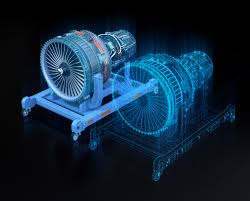Marvel movies are famous for epic battles, jaw-dropping visuals, and witty one-liners. But buried in the humor and explosions are surprising lessons about one of the most mind-bending areas of modern science: quantum computing.
From Doctor Strange’s time loops to Ant-Man’s adventures in the Quantum Realm, Marvel’s take on quantum mechanics can actually help us understand how this revolutionary technology works — minus the superhero suit.
Let’s break down five fascinating lessons Marvel movies can teach us about quantum computing.
1. Parallel Universes & Superposition – Doctor Strange’s Time Loops
Remember when Doctor Strange trapped Dormammu in a time loop in Doctor Strange (2016)? He existed in multiple outcomes at once — dying over and over but also winning by persistence.

This is a lot like superposition in quantum computing.
- In classical computing, bits are either 0 or 1.
- In quantum computing, qubits can be 0, 1, or both at the same time until measured.
Real-world takeaway:
Superposition allows quantum computers to explore multiple possibilities simultaneously, making them incredibly powerful for solving complex problems like optimization, logistics, or drug discovery.
Marvel analogy: Doctor Strange didn’t try each timeline one at a time — he experienced them all in overlapping loops, just like a quantum algorithm processes multiple outcomes in parallel.
2. Entanglement – Ant-Man and the Quantum Realm
In Ant-Man and the Wasp (2018), Scott Lang becomes “entangled” with Janet van Dyne after they both spend time in the Quantum Realm. This mystical connection lets them share feelings and visions instantly.
This is inspired by quantum entanglement:
- When two qubits are entangled, changing one immediately affects the other, no matter the distance between them.
- Einstein famously called it “spooky action at a distance.”
Real-world takeaway:
Entanglement enables quantum computers to coordinate qubits in ways that classical bits can’t, enabling faster and more secure communication (think quantum cryptography).
Marvel analogy: Just like Janet could communicate across realms instantly, entangled qubits share information instantly — though sadly, without the cool glowing effects.
3. Quantum Tunneling – Thor’s Bifrost Bridge
Thor travels between worlds using the Bifrost, which creates a shortcut through space. This is a great metaphor for quantum tunneling, where particles can “pass through” barriers they shouldn’t normally be able to cross.
Real-world takeaway:
In quantum computers, tunneling allows certain algorithms to bypass obstacles in problem-solving, finding faster routes to solutions that classical computers might miss.
Marvel analogy: While classical computers take the long road, quantum computers can sometimes “Bifrost” their way directly to the answer.
4. Quantum Error Correction – Iron Man’s Armor Upgrades
Tony Stark never stops upgrading his armor — from bulky Mark I to the sleek, nanotech Mark L. Why? Because in battle, even small malfunctions can be catastrophic.
Quantum computers face a similar problem: quantum states are extremely fragile and can be disturbed by noise, temperature changes, or even tiny vibrations. That’s why scientists use quantum error correction — adding redundancy and safeguards so the system can detect and fix errors without destroying the delicate quantum state.
Real-world takeaway:
Error correction is the “armor” of quantum computing, ensuring reliable results despite fragile qubits.
Marvel analogy: Just like Tony upgrades his suits to handle new threats, quantum engineers constantly improve error correction techniques to make these machines more practical.
5. Scaling Challenges – Avengers Team Assembly
In Avengers: Endgame, assembling the right mix of heroes is tricky. Too few, and Thanos wins. Too many without coordination, and chaos reigns.
Quantum computers face the same challenge when scaling up qubits:
- More qubits = more power, but also more complexity and potential for errors.
- Building a machine with thousands of stable, error-corrected qubits is like putting together an Avengers team that actually works together.
Real-world takeaway:
Scaling quantum computers is one of the biggest engineering challenges of the next decade, but progress is accelerating.
Marvel analogy: Just like the Avengers need balance and teamwork, quantum computers need finely tuned qubits working in harmony.
How Marvel Helps Us Understand Quantum Computing
While Marvel takes plenty of creative liberties, these movies make abstract quantum concepts relatable. They use storytelling to explain ideas like superposition, entanglement, and tunneling in a way even non-scientists can picture.
In the real world, quantum computing is already making waves in:
- Drug discovery – Simulating molecules faster than classical computers.
- Finance – Optimizing portfolios and risk management.
- Cybersecurity – Developing quantum-resistant encryption.
- Climate research – Modeling complex environmental systems.
We might not have Pym Particles or the Time Stone, but quantum computing could transform industries just as dramatically.
The Takeaway
Marvel movies might be fiction, but the science behind their most mind-bending scenes isn’t. Quantum computing is real, it’s advancing fast, and it’s going to reshape technology in ways we’re only starting to imagine.
So next time you watch Doctor Strange outwit Dormammu or Ant-Man dive into the Quantum Realm, remember — somewhere in a lab, scientists are working on the real-world versions of those quantum tricks.
And you don’t need to be a superhero to be part of that revolution — just someone curious enough to learn.





